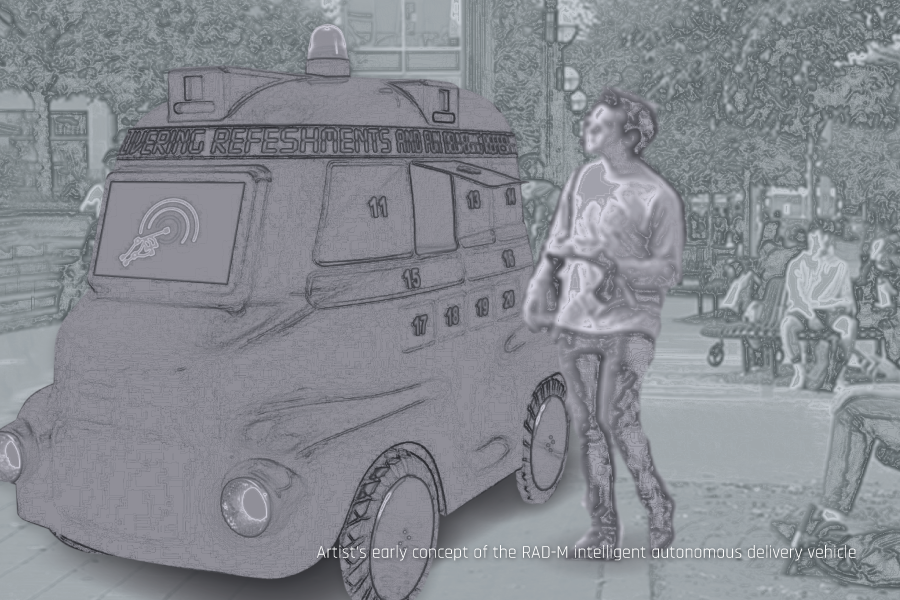Applications for the autonomous vehicle will not be limited to food delivery, but let’s start with that. On-site restaurants or kitchens will load up the delivery robot’s compartments with as many as ten separate orders and enter corresponding delivery addresses or destinations for each. Upon the food’s arrival, customers will use a mobile app or digital keypad on the vehicle to unlock their compartment and remove their order. The robot will alleviate staffing challenges while saving customers money, as it has no desire for a generous tip.
Imagine the robot making meal deliveries curbside at college dormitories, to tailgaters in stadium parking lots, or at picnic areas within a park or corporate campus. Because so many orders can be delivered at once, food and drinks will arrive more quickly and at the right temperature, even at the busiest times of day.
In addition to food “delivery,” the robot can serve as a mobile point-of-sale, pre-stocked with beverages, snacks, or meals. For example, restaurants within pedestrian malls, parks, or transit hubs could load up a vehicle with ready-to-eat meals and send it to serve customers on the other side of the property. When supplies run low, a second robot might arrive to replace it while first returns to the restaurant to load up again. A robot could move throughout the grounds at a music festival or art fair, selling refreshments. Or, an amusement park might dispatch vehicles pre-loaded with bottled water to circulate near crowded ride lines, making it convenient for guests to purchase a drink while they wait. They could also purchase sunscreen and t-shirts. Robots will allow vendors to flexibly expand their footprint beyond their physical location.
AITX’s new robot can also work in tandem with human service workers. For example, a conference center might have meeting rooms located in separate buildings far from the kitchen. Coffee, snacks, and lunch trays can be delivered via robot to the meeting site while human workers unload and serve the meals to guests.
Now let’s address other delivery and service applications. There are countless examples of where a robust autonomous delivery vehicle can assist with a property’s operations and improve the customer experience. For example:
Housekeeping at a large, sprawling resort can only carry so many towels and rolls of toilet paper on their carts. Rather than repeatedly returning to a centralized location to restock, a robot can be dispatched with fresh supplies for crews as they move between units, significantly improving efficiency.
A golfer on the 14th hole needs a first-aid kit. The clubhouse can have a delivery robot there in just minutes, allowing the golfer to patch themselves up and continue playing as part of the foursome.
A large manufacturing facility or warehouse can deliver supplies to workers on the line before they run out. Or bring special tools to address a problem.
Truly, the applications are endless.
ROAMEO, the yet un-named delivery robot’s older sibling, is already changing the security guard paradigm. Facing an unprecedented lack of candidates to fill security guard positions, and steeply rising wages for workers that remain, robots are successfully filling the void. Companies are discovering that their security operations improve when they deploy autonomous mobile technology to handle mundane tasks that are best suited for machines – like routine observation and patrolling of grounds – while reserving human capital to manage more challenging response coordination.
The same model promises equal success for handling delivery functions. Restaurants, retailers, businesses, and property managers are struggling to find low-wage hourly workers to handle these roles. Help is on the way. AITX’s proprietary robots will soon do these jobs while reducing costs, increasing efficiencies, and navigating the last mile of delivery. It also creates opportunities for commercial enterprises to explore new operational templates that, by leveraging technology, will improve the daily experiences of employees and customers alike.



